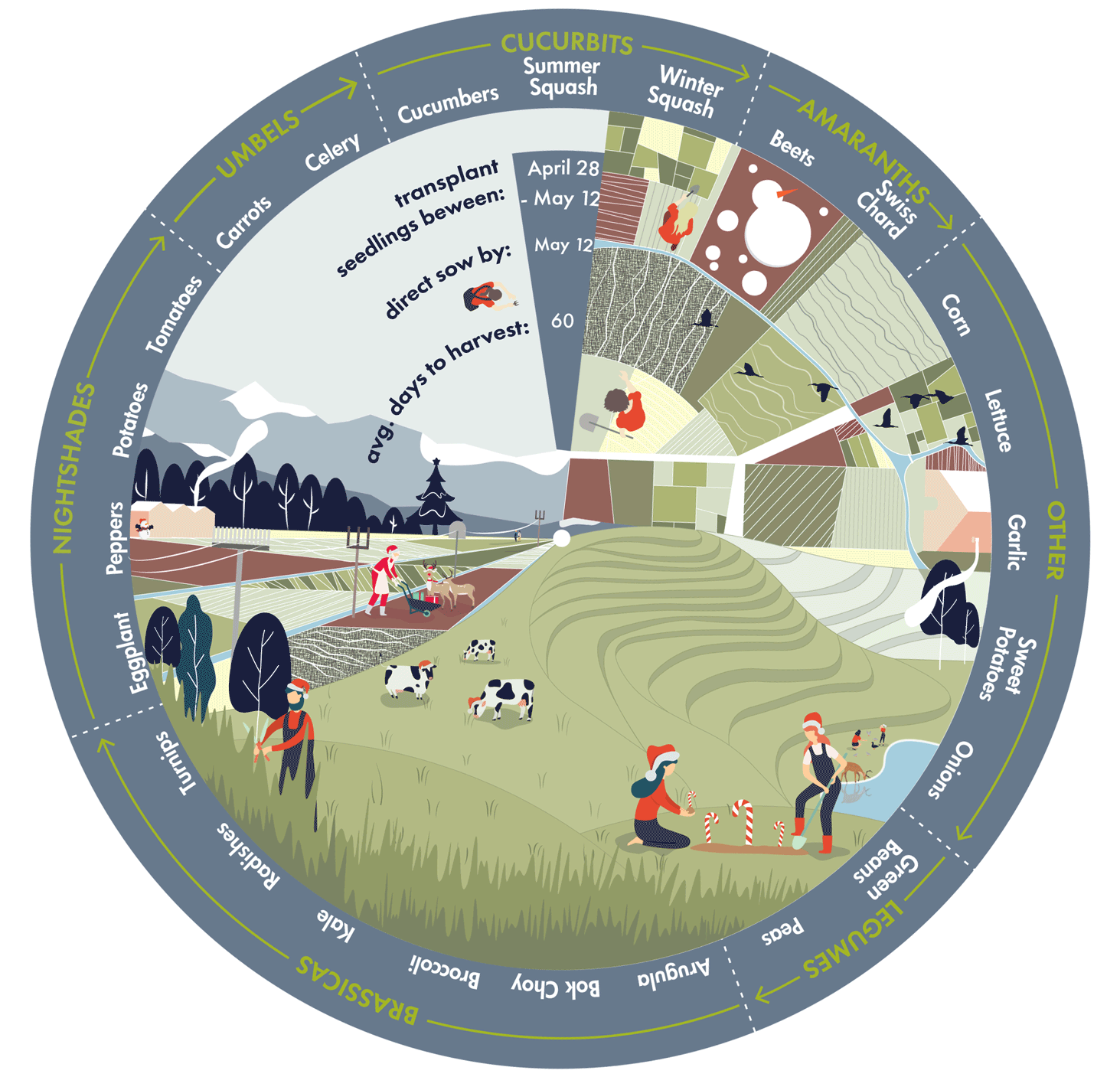We hope this planting calendar helps you have a productive 2025!
Below you’ll find more information about the planting order and families of veggies on your calendar, plus a downloadable expanded poster size planting calendar.
Vegetable Types
Understanding vegetable types is key to optimizing plant health, yield, and soil fertility. Rotating crops in a specific sequence, such as legumes, brassicas, then nightshades, helps maintain soil balance and disrupt pest cycles. For example, legumes enrich the soil with nitrogen, benefiting nutrient-demanding crops like brassicas that follow. This rotation prevents nutrient depletion and breaks pest and disease cycles, fostering a healthier, more productive garden.
Legumes are nitrogen fixing, meaning they can pull nutrients from the air and deposit it into the soil. Peas, beans, lentils, clovers, or alfalfa should be planted in between “heavy feeder” crops for soil health.
Legumes
Brassicas, otherwise known as the family Brassicaceae, includes cabbages, cauliflower, broccoli, kale, brussels sprouts, kohlrabi, rutabagas, radishes, and turnips. Brassicas tend to be cold-tolerant and like well-drained, basic soil between 6.5 and 7.5 pH. This means forking and adding lime amendments to the soil will help these cruciferous veggies thrive!
Brassicas
The nightshade family is made up of tomatoes, potatoes, eggplant, peppers, and also includes crops like okra, gogi berries, and tobacco. Nightshades use lots of nutrients from the soil and are very susceptible to diseases so it’s critical to not plant nightshades in the same location two years back to back.
Nightshades
The Umbellifer family, or Umbels, are known for their attractive ‘umbrella-shaped’ flowers clusters. Made up of carrots, parsnips, parsley, dill, celery, and cilantro, this family is good for companion planting as it attracts predatory insects that may help rid other areas of pests.
Umbels
Cucurbits contain all cucumbers, melons, gourds and squashes, and tend to be large, vining plants so clear some space if you’re planting something from cucurbitacae! Most of these cannot self-pollinate so they rely heavily on pollinating insects for fruiting.
Curcurbits
Amaranthaceae contains crops like beets, spinach, swiss chard, and quinoa. This family likes lots of sun, and grows easily in varying conditions like slightly acidic soil and late season frost.
Amarath
Though these crops also fit into other families of plants, their order in the rotation is less critical. They tend to be less susceptible to pests and diseases - though not immune, so it is still important to relocate where these are planted from year to year if possible! Onions, and most alliums, are great companion plants (to most things except legumes) so they can be dispersed amongst other planting areas to help deter pests.


